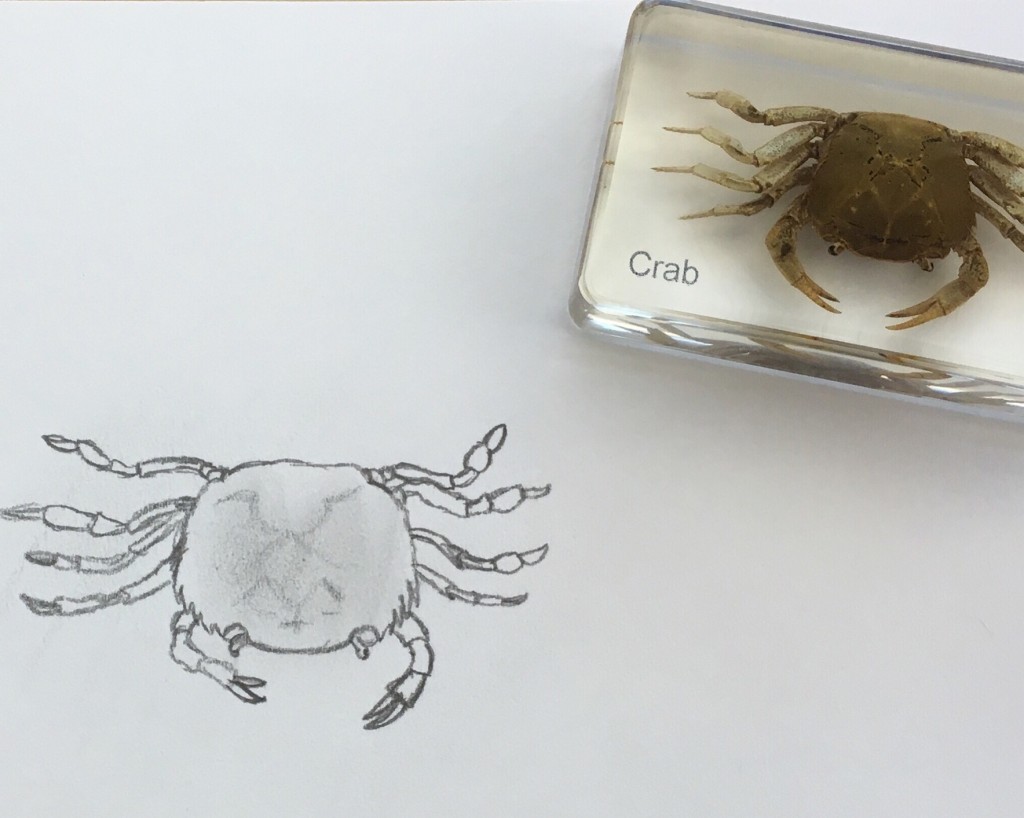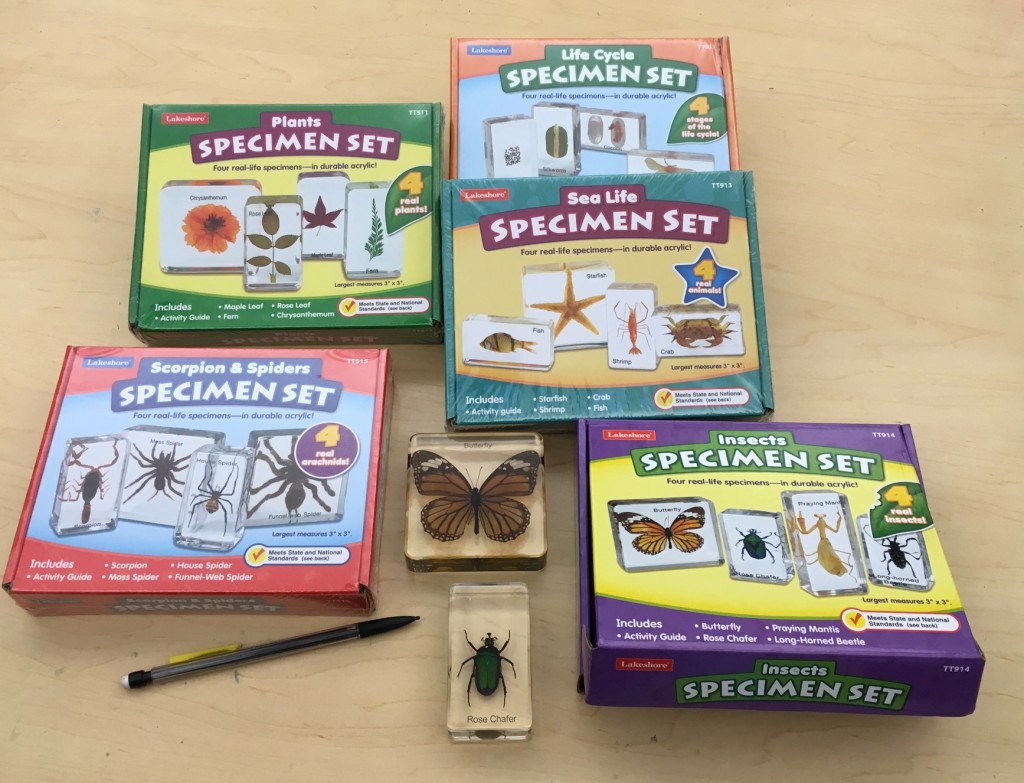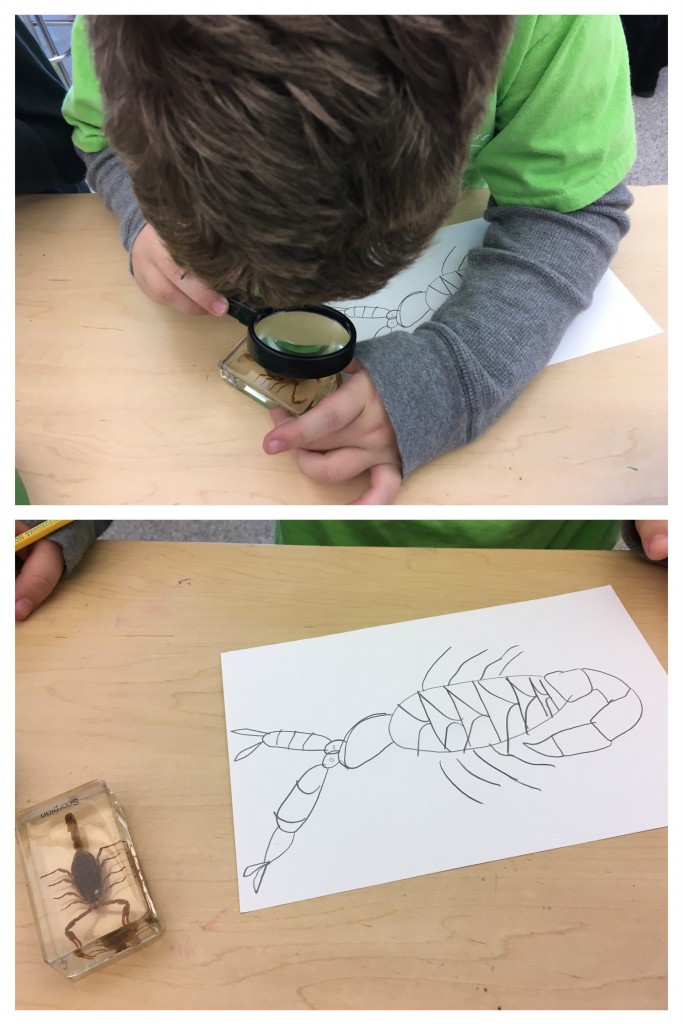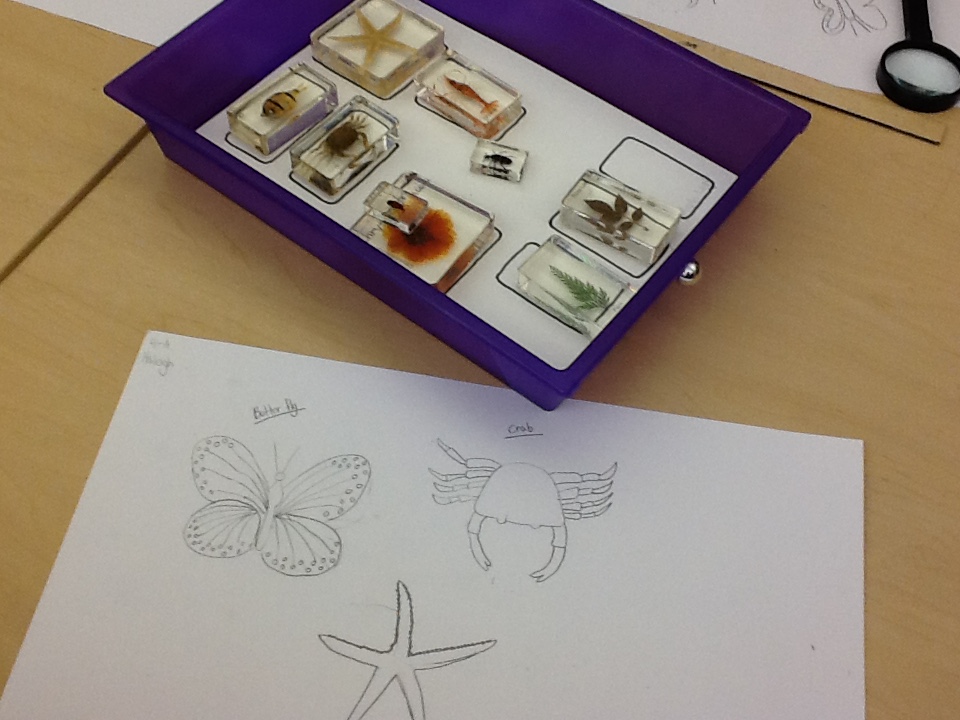STEAMing Up the Art Room: Specimens
2 Min Read • STEAM
I can’t wait to show you some of the awesome items that I received from our local education foundation! I started adding some STEAM resources in my art room earlier in this school year. You can read about it here in my October 2016 EdCloset post. Creating and learning with awesome and STEAMing art room resources is very exciting!

Illustration by a 5th-grade artist
Scientific Study in STEAMing Art Room
I attended a symposium at The Aldrich Contemporary Art Museum called “Full Steam Ahead” last September. I got a fabulous idea for adding STEAMy resources to the art studio for my students from the director of the Nature Lab at the Rhode Island School of Design. The Nature Lab is a natural science collection and lending library where students have hands-on access to specimens such as shells, taxidermy animals, and skeletons. There are live plants and animals to support a visual inquiry into biological and natural sciences.
If college students could have hands-on access to natural specimens, then mine should too! As budding artists and scientists, students need to practice careful observation. Insect specimens encased in clear acrylic immediately popped into my mind. I found out quickly that they are really expensive! After checking with educators I knew on Facebook and Twitter, I was able to include appropriate scientific specimens for a K-5 art room in my grant.
I found these beautiful and durable specimens in acrylic were made for young students. Perfect! My students love them and think they are cool…or they are a bit creeped out! I have to say when I unwrapped the large spiders (3 inches across!) they actually took my breath away.
Student Observations
Students touched, magnified and investigated all of these new resources. Some students drew what they saw, others needed to observe with a magnifier. Many had questions, others had exciting finds to share:
“What is on this insect’s leg?”
“Why does that spider have so much hair?”
“Hey! I think that this caterpillar pooped in there!”
“Mrs. T… Allie and I saw that scorpion’s leg MOVE! Twice!”
A side effect of making the art room a place for students to create, explore, learn and solve problems, is increased student engagement.
I am convinced that it’s our job as educators to encourage students to grow as artists, scientists, and problem solvers.
What do you think?
Have you written any grants for STEAM, STEM or the arts?
What did you include, and why?






